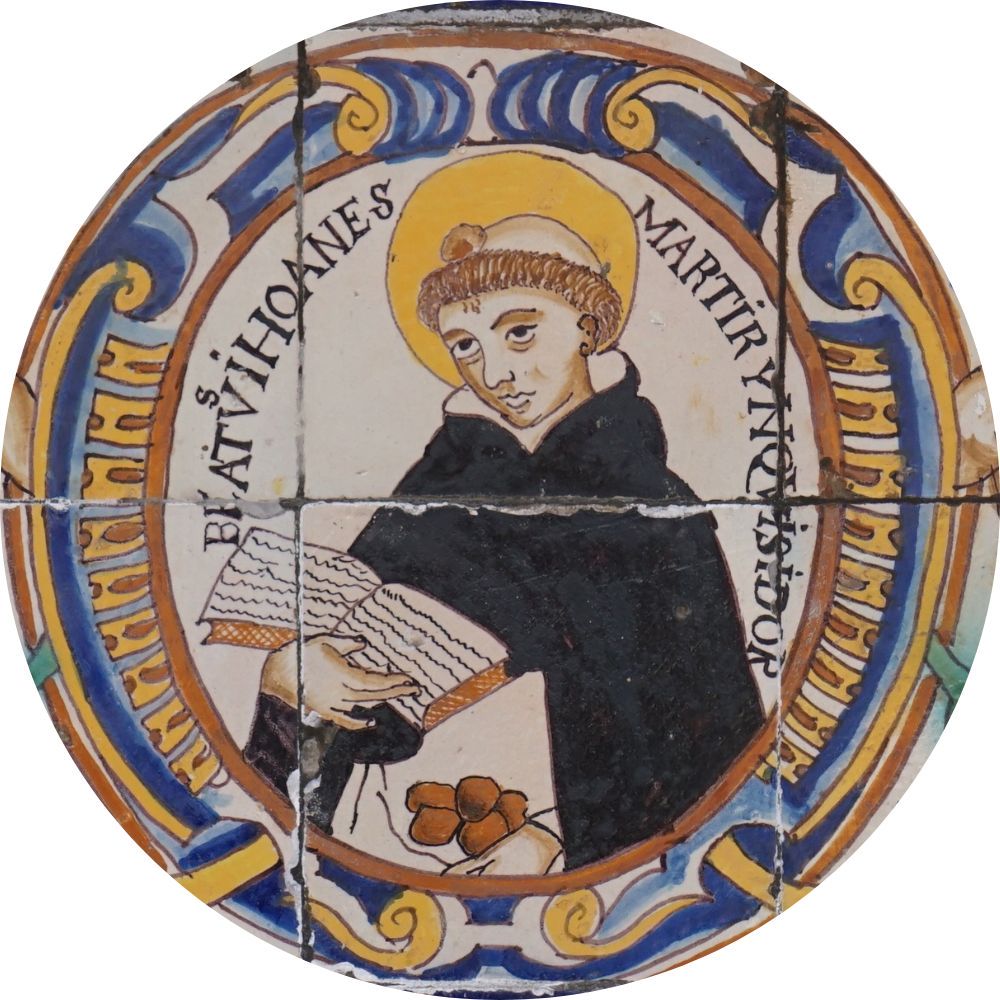John of Hungary
John of Hungary, inquisitor and martyr
(† 1230)
We don't know much about him. All you can read in the Annèe dominicaine is that he was a bishop whom Pope Gregory IX sent to the "wild countries" where he was stoned to death. Some hagiographical accounts do not mention that he had episcopal dignity. In the Dominican tradition, we can find much convolutedness that only complicate learning about the life of this Dominican. For example, Spanish Dominican Juan de la Cruz (1542-1591) reports that Br. John of Hungary was an inquisitor in Toulouse, and it was there that he was sentenced to death along with five fellow monks; making him the leader of a group of six martyrs. They seem to be the ones the Polish historian and hagiographer Michal Siejkowski had in mind when he included them in his Dni roczne under January 30. It is also worth noting that two Johns appear among them. In some works on Dominican saints, blesseds and martyrs, you can find several different figures under the name John of Hungary. Thus, for example, Stephanus de Sampayo mentions as many as three Johns of Hungary: the first died in 1230 and was skinned while still alive; the second, of whom he explicitly states that he was an inquisitor of Toulouse, was killed by stoning along with six of his confreres in 1271; and finally the third, also an inquisitor in Toulouse, who was sliced around 1270.
The combination of the two offices, namely the inquisitor and bishop is rare, but encountered. It is known that these two offices were held by John of Wildeschausen, bishop-elect of Bosnia, which was then part of the Kingdom of Hungary. Later he was also the master general of the order. He might have been a martyr as it is how he was called by Br. Gerard de Frachet in Vitae Fratrum.
Today, we won't be probably able to settle exactly who John of Hungary really was, and where he suffered his martyrdom. However, there was a tradition about him that considered him a blessed martyr. This is probably why his depiction appeared in the ceramic decoration in the cloister garth of San Domingo Monastery in Lima. We can also speculate that those red round objects on the scapular may mark the stones with which he was murdered.
Bibliography:
- Sampayo S. de, Thesaurus arcanus. Lusitanis gemmis refulgens, in quo Ægidii Magi olim theurgici stupe[n]da historia, variis exculta dialogis, atq[ue] alioru[m] S. Patru[m] Ord. Præd. ex eade[m] Lusitania, gesta, multaq[ue] alia scitu dignissima contine[n]tur, qu[a]e versa pag. indicabit, Paris 1586, k. 246v, 247V, 248
- Annee dominicaine ou vies des saints des bienheureux, des martyrs et des autres personnes illustres ou recommandables par leur piété. De l’un et de l’autre sexe de l’Ordre des Frères Prêcheurs distribuées suivant les jours de l'année. Nouvelle édition. Revue et annotée par des religieux du même Ordre. Octrobre, Lyon 1902, p. 50.
- Juan de la Cruz, Coronica dela Orden de Predicadores, de su principio y sucesso hasta nuestra edad y dela vida del bien auenturado sancto Domingo su fundador y de los sanctos y varones memorables q[ue] en ella florecieron, Lixboa 1567, p. 135.
- Loenertz R., Un catalogue d’écrivains et deux catalogues de martyrs dominicains, „Archiwum Fratrum Praedicatorum”, 12 (1942), p. 279-303.

